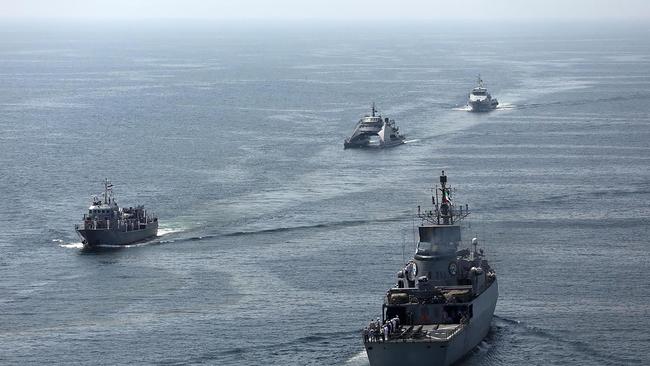US threat assessment sounds the alarm on China
A new threat assessment warns stronger links between China, Russia, Iran and North Korea pose ‘new challenges’ to America and that Taiwan will face escalating coercion from Beijing in 2025

Escalating coercive tactics by Beijing against Taiwan are being forecast for 2025 in the new US National Threat Assessment which warns the growing alignment between China and Russia has the “greatest potential to pose enduring risks to US interests.”
The 30 page document issued by the Office of the Director of National Intelligence said that co-operation among China, Russia, Iran, and North Korea had been “growing more rapidly in recent years, reinforcing threats from each of them individually while also posing new challenges to US strength and power globally.”
Closer ties between these nations would increase the chances of “US tensions or conflict with any one of these adversaries drawing in another.”
“Co-operation between China and Russia has the greatest potential to pose enduring risks to US interests,” the assessment said. “Their leaders probably believe they are more capable of countering perceived US aggression together than alone, given a shared belief that the United States is seeking to constrain each adversary.”
The threat assessment reflected on the Ukraine conflict, stating that Russia had gained the “upper hand in its full scale invasion” over the past year and that continuing the war “perpetuates strategic risks to the United States of unintended escalation to large-scale war.” The risks of the war continuing also included the potential use of nuclear weapons, heightened insecurity among NATO allies and a more emboldened China and North Korea.
On China, the assessment said Xi Jinping would press ahead with the “great rejuvenation of the Chinese nation” by 2049 and seek to shape world events to create an environment favourable to Beijing’s interests.

It warned that Beijing presented “the most comprehensive and robust military threat to US national security” but noted China’s preferred use of grey zone tactics short of war to achieve its strategic objectives.
“The PLA has the capability to conduct long-range precision-strikes with conventional weapons against the Homeland’s periphery in the Western Pacific, including Guam, Hawaii, and Alaska,” it said. “China is using complex, whole-of-government campaigns featuring coercive military, economic, and influence operations short of war to assert its positions and strength against others, reserving more destructive tools for full-scale conflict.”
“The PRC will likely continue posturing to be in a position of advantage in a potential conflict with the United States,” it said. “The PRC will continue trying to press Taiwan on unification and will continue conducting wide-ranging cyber operations against US targets for both espionage and strategic advantage.”
“In 2025, Beijing will likely apply stronger coercive pressure against Taiwan and perceived increases in US support to the island to further its goal of eventual unification.”
Beijing’s aggressive conduct in the South and East China Seas were “heightening tensions that could trigger a broader conflict.”
China’s dominance in the mining and processing of several critical materials was seen as a key threat that had the “ability to restrict quantities and affect global prices,” while Beijing was also pursuing a national strategy to “displace the United States as the world’s most influential AI power by 2030.”
The war in Gaza had undermined stability in the Middle East and the region was expected to “remain volatile” along with Israel–Iran dynamics. Hamas had been degraded after its October 7 attack in 2023 but still posed a threat to Israeli security.
Iran would continue to expand its relationships with US adversaries and the Global South to blunt the impact of Western sanctions. However, the threat assessment noted that “regional and domestic challenges, most immediately tensions with Israel, are seriously testing Iran’s ambitions and capabilities.”
“We continue to assess Iran is not building a nuclear weapon and that Khamenei has not reauthorized the nuclear weapons program he suspended in 2003, though pressure has probably built on him to do so,” it said.
North Korea still remained committed to increasing its nuclear warheads and “improving its missile capabilities to threaten the Homeland and US forces, citizens, and allies, and to weaken U.S. power in the AsiaPacific region.”
The threat assessment called out the dangers to America posed by foreign illicit drug actors as well as transnational Islamic extremists. “Al-Qa‘ida maintains its intent to target the United States and U.S. citizens across its global affiliates,” it said.
The fall of the Assad regime in Syria created conditions that could “contribute to a resurgence of ISIS and other Islamist terror groups.”




To join the conversation, please log in. Don't have an account? Register
Join the conversation, you are commenting as Logout